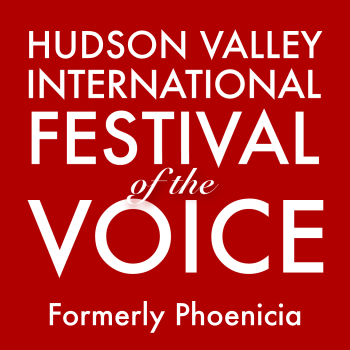Re-Invention in the time of Covid Pandemic
PANDEMIC- just over two years ago, the world was shutting down because of the corona virus which began tragically taking lives around the world. It was hard on everyone without question, but certain sectors were hit harder than others- especially the performing arts.
Opera houses, Broadway and West End theaters were closed for nearly two years and artists’ contracts were cancelled during that cataclysmic time span— tens to hundreds of thousands of dollars gone with no hope of remuneration.
Broadway and Opera are meant to be live-performance mediums in large, beautiful theaters. But to survive, they retreated to tiny, electronic rooms on Zoom and Facebook. However, Maria Todaro, the general director of the Phoenicia International Festival of the Voice knew something better had to be done, that even during a pandemic shutdown, that opera HAD to be LIVE!
And so the idea of a live, drive-in opera was conceived—performers, chorus and orchestra, safely distanced while the audience were snug and safe in their cars. The Phoenicia Festival of the Voice became the first entity in the United States to produce a live, drive-in opera- the first audience attended performance in the country!
A stage was built in an abandoned IBM parking lot, spaces were marked off for the cars and grand opera took over what was at the time called ‘Tech City’ in Kingston, NY. Three Metropolitan Opera stars (Jonathan Tetelman, Elizabeth Blanks-Biggs and Kyle Alberston) and the rest of the illustrious cast filled that corner of Kingston with the glorious music of Puccini’s Tosca while director, Maria Todaro, added ‘volumetrics’ to give the villainous Scarpia ‘super powers’ that allowed ‘touch’ without touching! An 18th century opera setting was moved to the future- think ‘Star Wars Tosca’! and the singers were staged in such a way that allowed them to convey their passions at a safe distance which in many ways brought out even more ardent singing!
The action on stage was transmitted to the far reaches of the parking lot on jumbo trons and a special coordination of the sound was achieved so that whether near the stage or at the far edges of the vast outdoor space, there was no sound delay PLUS, the acoustic sound was coordinated with a radio broadcast so that whether you listened on your car radio or through the window, the music was perfectly coordinated.
The audience was spellbound and the tremendous ovation via car horns combined with cheering and shouting went on for than 20 minutes—while orchestra, singers and crew received their first paycheck in more than 6 months!!!
Not only was Maria Todaro and the Phoenicia Int. Festival of the Voice the first to bring live performance back during the pandemic, but their amazing success paved the way for other companies to try similar scenarios putting artists safely back to work in a calamitous time!

Leave a Reply
You must be logged in to post a comment.